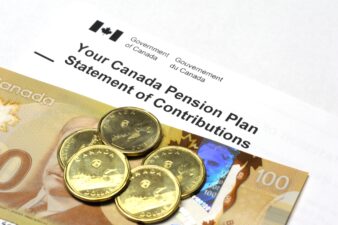When the pandemic hit in 2020 and caused massive lockdowns in countries around the world, nobody knew for sure just how badly the economy would be impacted. A pandemic of that magnitude was essentially unprecedented given the interconnectedness of the world these days, and with interest rates already ultra-low, there wasn’t a tonne of options the Canadian government had as COVID cases kept rising.
The lengthy shutdowns and inability to lower interest rates resulted in a tonne of cash being printed, both in Canada as well as other countries around the world.
Then when supply chain issues began to become more prevalent as a result of shutdowns around the world, and all this excess money supply was flowing through the economy, it became quite clear that inflation could soon get out of control.
Now, more than a year later, interest rates have been rising rapidly, impacting many Canadians’ budgets and catching many by surprise. Not only have rates been rising much more frequently and at a faster pace than we’ve seen in the past, but in addition, many Canadians got used to ultra-low interest rates considering how many years rates were below 1% leading up to the pandemic.
However, while rising interest rates are intended to help pull money supply from the economy and naturally make it harder for consumers and businesses alike to continue to spend, the impacts they have on your finances don’t have to be completely negative.
So, if you have cash on the sidelines that you’ve saved up and you’re looking to capitalize on rising interest rates, here’s how Canadians can take advantage of the current environment.
How Canadians are capitalizing on rising interest rates
When central banks increase interest rates, the goal is to try to incentivize both consumers and businesses to spend less and save more.
Higher interest rates make spending more expensive. However, they also make investments more attractive.
For instance, when interest rates climb, newly issued bonds come with higher rates. This shift makes existing bonds and dividend stocks less attractive, leading to a drop in their value as their yields start to look less appealing. And as they drop in value it causes their yields to rise as well.
So, while higher interest rates make it more expensive to buy a house or a new car, they make it cheaper for investors to buy stocks.
You can now buy stocks for below their long-term value and lock in a higher yield than many stocks typically offer.
One of the top dividend stocks in Canada to buy now
There are countless examples of this across the market, but even with some of the highest quality and most reliable stocks, you can see the impact higher rates have had on their valuation and the opportunity Canadians have to buy now at these discounted prices.
For example, Fortis (TSX:FTS) is a massive utility stock, one of the most defensive industries you can invest in. The stock is also one of the least volatile stocks on the market.
But because Fortis is primarily a dividend stock, its share price has also declined over the last year as interest rates have continued rising.
With Fortis trading below $55 today, it’s down more than 10% off its high. That might now seem like a massive discount, but keep in mind Fortis is one of the least volatile stocks on the market.
Furthermore, because it’s trading off its high, Fortis stock offers a yield of roughly 4.35% today. That’s significantly higher than its five and 10-year average dividend yield of 3.8%.
Therefore, while rising interest rates can make spending more difficult, especially while we’re still seeing elevated inflation, they can also give investors the chance to buy stocks undervalued and lock in a higher yield.
So, if you’re looking to capitalize on rising rates, it’s essential to take advantage of the environment while rates are still elevated and find some of the top Canadian stocks to buy now that you can hold in the long term.







